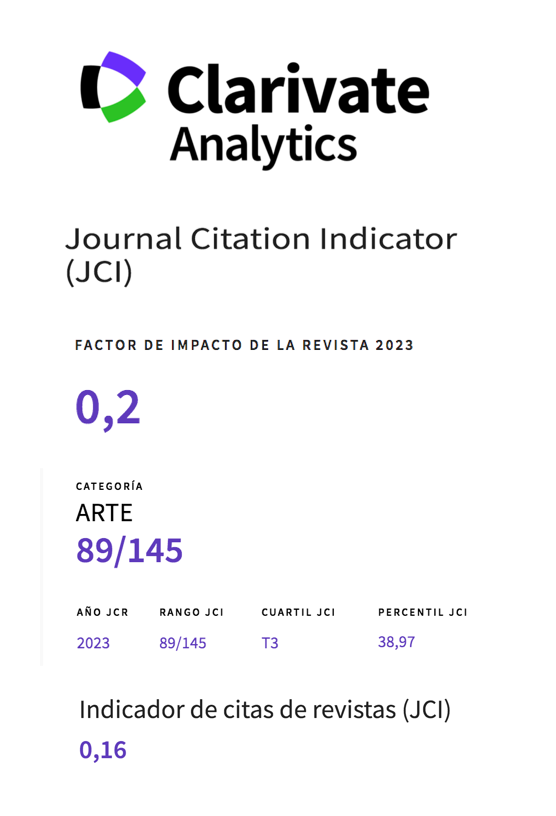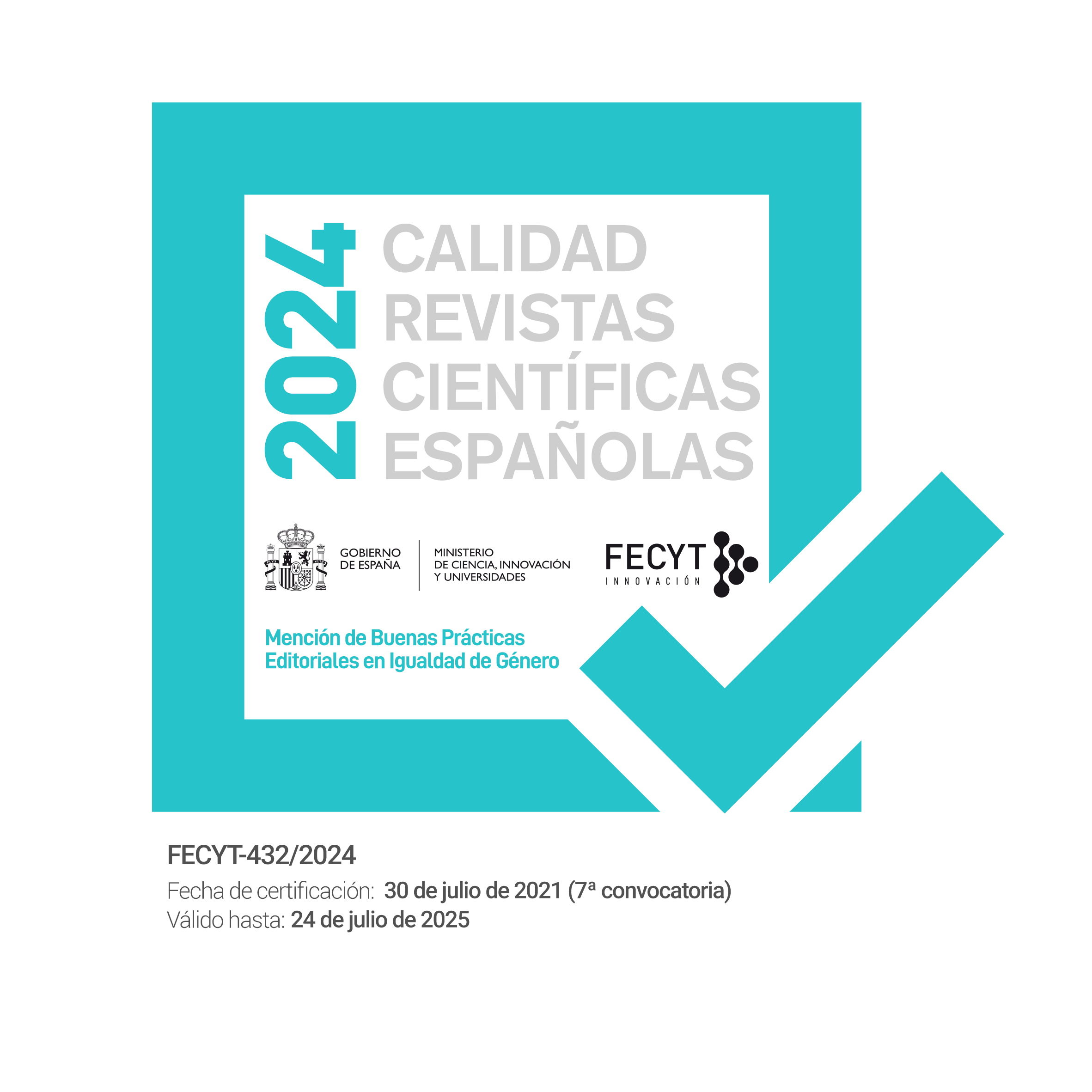Constructive fantasies of narco identity through aesthetics. A relational look at Contemporary Art
Abstract
In this article we silver the drift of an imaginary. Narratives on the narco aesthetic and its possibilities in relation to contemporary artistic practices.
We start from Matisse’s utopia to approach the postmodern scenario proposed, almost a hundred years later, by artists who come from the most
extravagant kitsch and capitalist universe, such as Damien Hirst, Maurizio Cattelan or Jeff Koons, where opulence, luxury and money are articulated in a
perverse and ironic speech. In this tour we pay attention to aspects of life such as architecture, fashion, music, cinema or television series produced by the
Netflix platform. We highlight the importance of drug trafficker Pablo Escobar, an icon of eccentricity and power, and we particularly point out his Hacienda
Napoles, a symbol of the Medellin cartel. On this estate, he created his own zoo where hippos have ended up as ready-mades, transnational symbols that
serve to produce new and exotic realities. Throughout the text we observe how crime and the illegal, in innumerable bizarre turns of postmodern history,
are incorporated into the narrative and even into aesthetic theory.
Downloads
-
Abstract1293
-
pdf (Español (España))843
References
Adorno, T. W. (2004). Teoría estética. (J. Navarro Pérez, Trad.) Madrid, España: Akal.
Aramburu-Zabala Higuera, M. Á., & Soldevilla Oria, C. (2007). Arquitectura de los indianos en Cantabria (Siglos XVI-XX). El patrimonio de la emigración trasatlántica (Primera ed., Vol. I). Santander, Cantabria: Ediciones de Librería Estvdio.
Borrás, G. (19 de Septiembre de 2017). Narcomoda: el vestuario de la serie Narcos crea tendencia. Recuperado el 12 de Noviembre
de 2021, de culturplaza: https://valenciaplaza.com/narcomodael-vestuario-de-la-serie-narcos-crea-tendencia
Foster, H. (2017). Malos nuevos tiempos. Arte, crítica, emergencia.
(J. Chamorro Mielke, Trad.) Madrid: Akal.
Foucault, M. (2012). El poder, una bestia magnífica. Sobre el poder, la prisión y la vida (Cuarta ed.). (H. Pons, Trad.) Buenos Aires, Argentina: Siglo veintiuno editores.
Gabbatt, A. (16 de Septiembre de 2016). On the throne:what it´s like to use the Guggenheim´s solid gold toilet. The Guardian. Recuperado el 15 de Diciembre de 2021, de https://www.theguardian.com/artanddesign/2016/sep/16/gold-toiletguggenheim-america-maurizio-cattelan
Jameson, F. (1995). El posmodernismo o la lógica cultural del capitalismo avanzado. Barcelona: Ediciones Paidos.
Martín Gordillo, E. (2007). ¿Acaso es malo querer ser millonario? En E. Martín Gordillo, Cómo triunfar en el mundo del arte. Estrategias del joven arte británico de los noventa (págs. 45-67). Málaga, España: CAC Málaga.
Rincón, O. (2009). Narco.estética y narco.cultura en Narco.lombia. Nueva Sociedad(222), 147-167.
Rincón, O. (2018). No somos Narcos, pero sí Pablo. En S. Giraldo Luque, ¿Por qué amamos a Pablo Escobar?: cómo Netflix revivió al narcotraficante más famoso del mundo (págs. 51-69). Barcelona: Editorial UOC.
Romero, L. (29 de Septiembre de 2021). La historia del artista danés que se apropia del dinero del museo: ¿arte o estafa? Obtenido de Radio Televisión Española: https://www.rtve.es/playz/20210929/historia-del-artista-se-apropia-del-dinero-delmuseo-arte-estafa/2176201.shtml
Rueda Fajardo, S. (2019). Plata y plomo. Una historia del arte y de las sustancias (i)lícitas en Colombia. Bogotá, Colombia: Crítica. Planeta Colombiana.
Santaeulalia, I. (5 de Noviembre de 2021). Plata o plomo para los hipopótamos de Pablo Escobar. El País. Recuperado el 12 de Enero de 2022, de https://elpais.com/ciencia/2021-11-05/platao-plomo-para-los-hipopotamos-de-pablo-escobar.html
Sontag, S. (2020). Sobre la fotografía (Segunda ed.). (C. Gardini, Trad.) Barcelona: Debolsillo. Penguin Random House.
Works published in this journal are subject to the following terms:
- The Service of Publications from the University of Murcia (publishing house) keeps the published works’ copyrights, and favors and allows the reuse of these works under the license indicated in point 2.
- Works are published in the journal’s online edition under the license Creative Commons Reconocimiento-NoComercial-SinObraDerivada 3.0 España(texto legal). They can be copied, used, disseminated, transmitted and publicly exhibited, as long as: i) the author and original source of publication are cited (journal, publishing house and work’s URL); ii) they are not used for commercial purposes; iii) the existence and specifications of this license are mentioned.
3. Conditions for auto-file. It is allowed and encouraged that authors share electronically their pre-print version (the pre-reviewed version) and /or post-print version (the reviewed and accepted version) of their Works before the publication, since it promotes its circulation and dissemination. RoMEO color: green.










